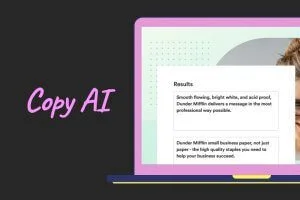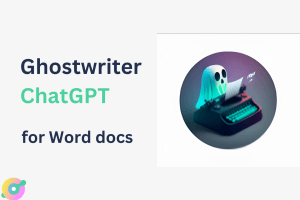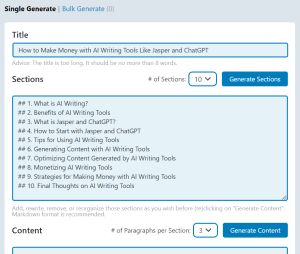Small language models (SLMs) have become increasingly popular due to their efficiency and accessibility.
Unlike their larger counterparts, SLMs are designed to perform specific tasks with minimal computational resources.
This makes them ideal for a variety of applications, from chatbots to real-time translation. In this blog post, we will explore some of the most popular small language models in [Year] and their unique advantages.
Key features of SLMs
- Efficiency: Small language models run faster and require less memory.
- Accessibility: They are more affordable and easier to deploy.
- Scalability: The smaller size of SLMs makes them easier to fine-tune for specific tasks or domains. This allows them to be adapted to specific needs without extensive training or resources.
- Adaptability: Despite their size, SLMs can still perform various natural language processing tasks, from understanding text to generating human-like text. This versatility allows them to be applied in many areas.
Table of contents
Best small language models (slms)
1) RoBERTa
I find RoBERTa to be one of the most reliable small language models of 2025.
RoBERTa stands for Robustly Optimized BERT Approach. It is a fine-tuned version of BERT (Bidirectional Encoder Representations from Transformers).
RoBERTa improves on BERT by using more data and computing power. It’s trained on a larger dataset and performs better in most tasks. This makes it a strong choice for many applications.
Using RoBERTa, I can get great results in tasks like text classification and sentiment analysis. It’s popular among developers because of its high accuracy and performance.
For anyone starting with natural language processing, RoBERTa is a model I recommend considering. It’s versatile and can be integrated into various projects easily. If I’m coding a new app or handling large text data, RoBERTa often becomes my go-to choice.
2) DistilBERT
DistilBERT is a smaller and more efficient version of BERT.
It was developed to use fewer resources while retaining much of BERT’s capabilities. This model has nearly half the parameters of BERT base but maintains around 95% of its performance on benchmarks like GLUE.
DistilBERT’s efficiency comes from the process of knowledge distillation. This process involves training a smaller model to mimic the larger, more complex BERT. By doing this, the creators were able to make a compact model without losing too much accuracy.
One of the things I like about DistilBERT is its versatility. It’s been fine-tuned to work well across different tasks. Whether it’s question answering, text classification, or sentiment analysis, this smaller model performs impressively.
Another feature of DistilBERT is its speed. It runs approximately 60% faster than BERT. This makes it a great option for applications where quick responses are essential.
DistilBERT also saves on computational costs. This model is cheaper to run, which is beneficial for those who need high-quality natural language processing without the expense of larger models.
For more technical details, check out its huggingface documentation.
Overall, DistilBERT offers a nice balance of performance and efficiency, making it a solid choice for many NLP tasks.
3) GPT-Neo
GPT-Neo is a powerful small language model developed by EleutherAI. It is based on the GPT architecture, sharing similarities with GPT-2.
What sets GPT-Neo apart is its use of local attention in every other layer, which allows for efficient processing of larger sequences of text.
One of the key features of GPT-Neo is its training on the Pile dataset, a large text corpus that enhances its ability to handle diverse language tasks. This makes GPT-Neo versatile in responding to various prompts and queries.
EleutherAI aims to make GPT-Neo comparable to larger models like GPT-3, but more accessible to the public. This open license approach encourages broader usage and innovation within the community.
GPT-Neo is a great example of efficient and open-access AI development. This model balances performance and accessibility, making advanced language modeling available to more users.
4) Mistral 7B
Mistral 7B is developed by Mistral and emphasizes accessibility and efficiency. It’s designed to be open-source and available for various applications through APIs and cloud-based deployments.
This model is particularly suitable for tasks that require precise and efficient natural language processing capabilities.
The Mistral 7B model consists of 7 billion parameters, striking a balance between performance and computational efficiency.
5) Alpaca 7B
Alpaca 7B is a finely tuned version of Meta’s LLaMA model.
This model is known for its high performance at a low cost, making it a cost-effective option for many NLP applications. Despite its small size, it performs complex tasks effectively.
Alpaca 7B was designed to replicate the capabilities of much larger models while remaining compact and affordable, requiring less than $600 in building costs (Analytics India Magazine).
6) Phi-2 and Phi-3
Developed by Microsoft, Phi-2 and Phi-3 are designed for efficiency and high performance on specific tasks.
These models are tailored for environments with limited computational resources, making them ideal for edge computing and real-time applications.
Phi-3, for instance, has around 3.8 billion parameters, allowing it to deliver high-quality results with minimal computational overhead.
7) Zephyr
Zephyr, is optimized for dialogue interactions, making it perfect for chatbots and virtual assistants. It combines efficiency with the ability to generate natural and engaging conversations in multiple languages.
Zephyr is a fine-tuned version of the Megatron-Turing NLG model, with around 7 billion parameters, providing robust capabilities for generating natural and captivating language .
The model is trained using a combination of supervised fine-tuning and Direct Preference Optimization (DPO) on multiple instruction datasets, including UltraChat, MetaMathQA, Evol Wizard Dataset, and Capybara Dataset.
This training approach allows the model to align with human preferences and perform well in text generation tasks, including instructional and Q&A-type tasks1.
8) Stable Beluga 7B
Stable Beluga 7B stands out for its balance between size and capability.
It’s designed for deep linguistic analysis and generation without the heavy computational and financial burden typically associated with such tasks.
The model has 7 billion parameters and is known for its ability to handle complex language tasks efficiently.
9) Gemma
Developed by Google, Gemma is another notable small language model that excels in specific, domain-focused tasks.
It is part of Google’s broader efforts to provide efficient and accessible AI tools for various applications. Gemma leverages the latest advancements in AI to offer high performance in a compact form.












